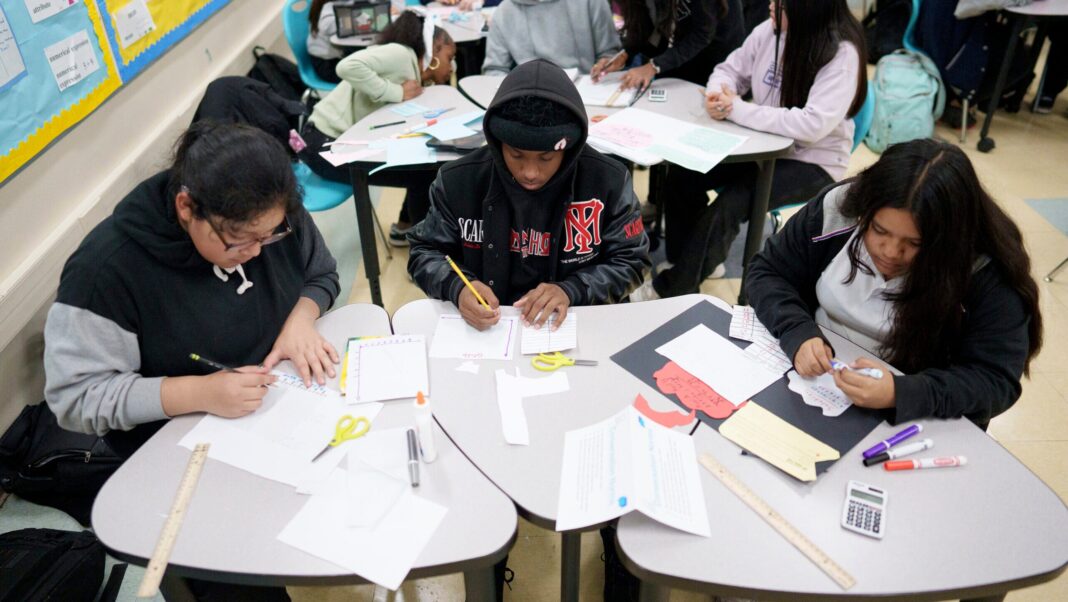The Alarming Decline in High School Academic Performance
A recent report from the National Assessment of Education Progress (NAEP) reveals a troubling trend: high school students are scoring lower in reading and math than they have in over two decades. This decline has persisted for a decade, exacerbated by the disruptions of the COVID-19 pandemic. The latest results indicate that 12th graders’ scores have hit their lowest levels since the assessment began, prompting urgent calls for educational reform.
The Pandemic’s Impact on Student Achievement
The ongoing slide in student performance can be traced back not only to the pandemic but to longer-term educational challenges. The recent assessments, which focused on 12th graders in reading and math as well as eighth graders in science, serve as a painful reminder of how far students have fallen. Matthew Soldner, acting commissioner of the National Center for Education Statistics, emphasized that among the lowest-performing students, scores are at historic lows. This alarming data signals an urgent need for focused action to rekindle student learning across the nation.
Long-Term Trends Preceding the Pandemic
While the pandemic undeniably disrupted learning, experts caution against solely attributing falling scores to its immediate effects. Pre-existing trends such as increased screen time, declining attention spans, and a diminishment in the reading of longer texts may be significant contributing factors. Educators have observed a shift in teaching methods, particularly in English and language arts, where a heavy emphasis on short texts has replaced the richer, deeper reading experiences that used to characterize high school curriculums.
Carol Jago, an advocate for comprehensive reading instruction, points out that she would typically assign her students around 20 books each year two decades ago. Today, English classes often assign only three texts per year. “To be a good reader, you need stamina,” Jago asserts, highlighting the need to develop analytical skills through extensive reading for comprehension.
Federal Responses to Educational Disparities
The concerning test scores have sparked varied responses from political leaders. Education Secretary Linda McMahon has linked the scores to a lack of effective federal oversight and funding in education. She points out that despite substantial annual expenditures on numerous K-12 programs, the achievement gap is growing. In contrast, House Democrats argue that the administration’s aim to dismantle the Department of Education would further harm students. Rep. Bobby Scott of Virginia stressed that removing the agency responsible for supporting public schools would only exacerbate existing disparities.
Shrinking Proficiency in Core Subjects
The data illustrates that fewer students are meeting even the basic benchmarks in reading and math. Lesley Muldoon, executive director of the National Assessment Governing Board, notes that students entering adulthood today possess fewer skills and less knowledge in core academics than their counterparts a decade ago. This decline in proficiency is particularly troubling as society demands more from future workers and citizens.
The 2024 NAEP data reveals a stark reality: one-third of high school seniors scored below the “basic” level in reading, meaning they struggled to extract key details from texts. In math, nearly half of high school seniors failed to reach this basic level, with only 33% considered academically prepared for college-level coursework—a marked decline from previous years.
Widening Achievement Gaps
Another gravely concerning finding is the widening gap between the highest- and lowest-performing students, especially in eighth-grade science and 12th-grade math. This growing inequality highlights the disparities within the American education system.
Additionally, a re-emerging gender gap in science, technology, engineering, and math (STEM) fields has raised eyebrows. After having leveled in previous years, girls are now scoring significantly lower in these subjects post-pandemic compared to their male counterparts. Investigations into students’ learning experiences reveal that fewer eighth graders engage in inquiry-based learning, which fosters deeper comprehension of scientific principles.
The Need for Comprehensive Educational Reform
As schools revisit their curriculums in light of the recent evidence, educators and policymakers must grapple with the implications of these findings. The data suggests that the quality and method of teaching, alongside the foundational skills students are acquiring, are in urgent need of reform. Educational stakeholders are urged to collaborate on targeted interventions to boost student performance and close achievement gaps.
While the challenges are daunting, the data-driven insights gleaned from the latest assessments offer a pathway for meaningful improvements in education, emphasizing the importance of adapting teaching methods to meet the evolving needs of today’s learners.



